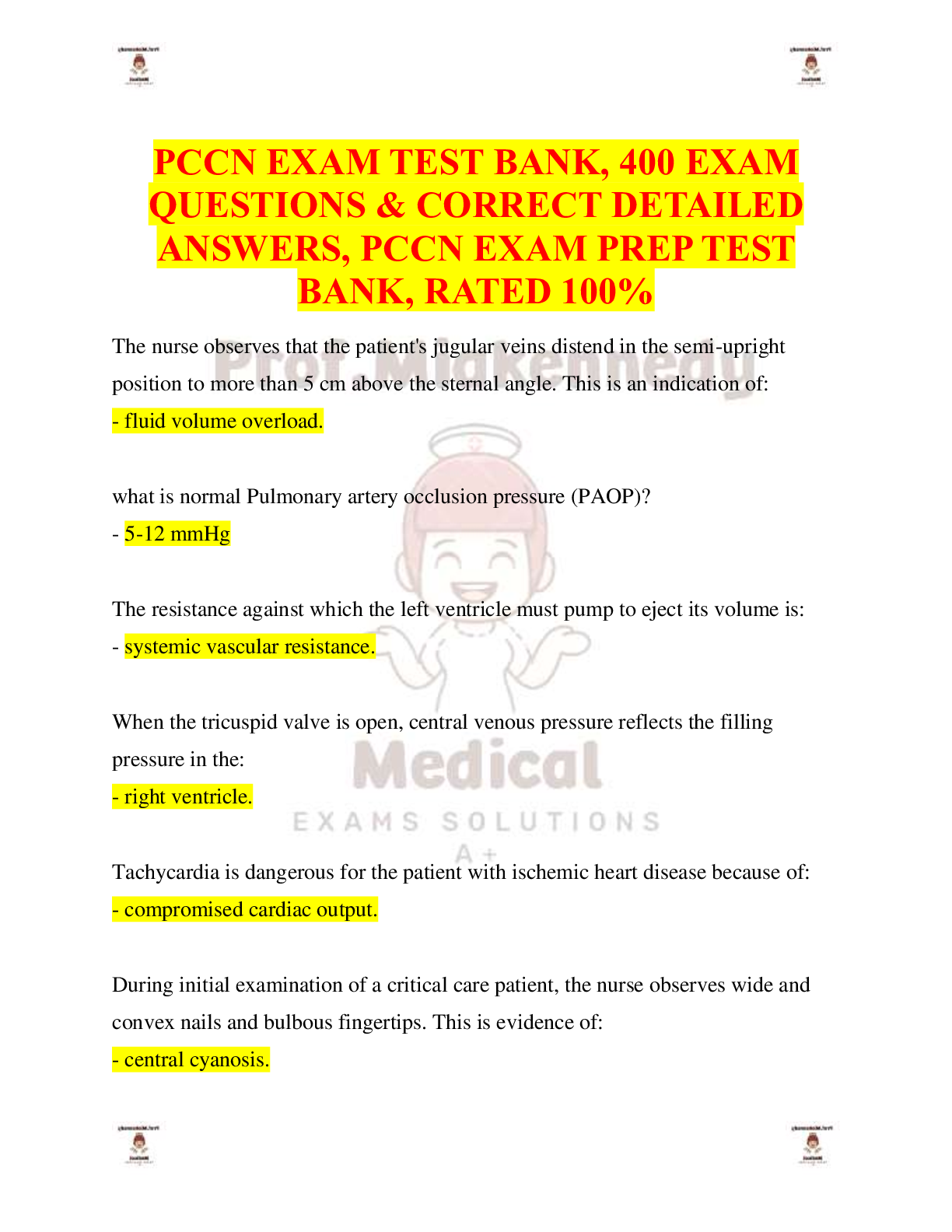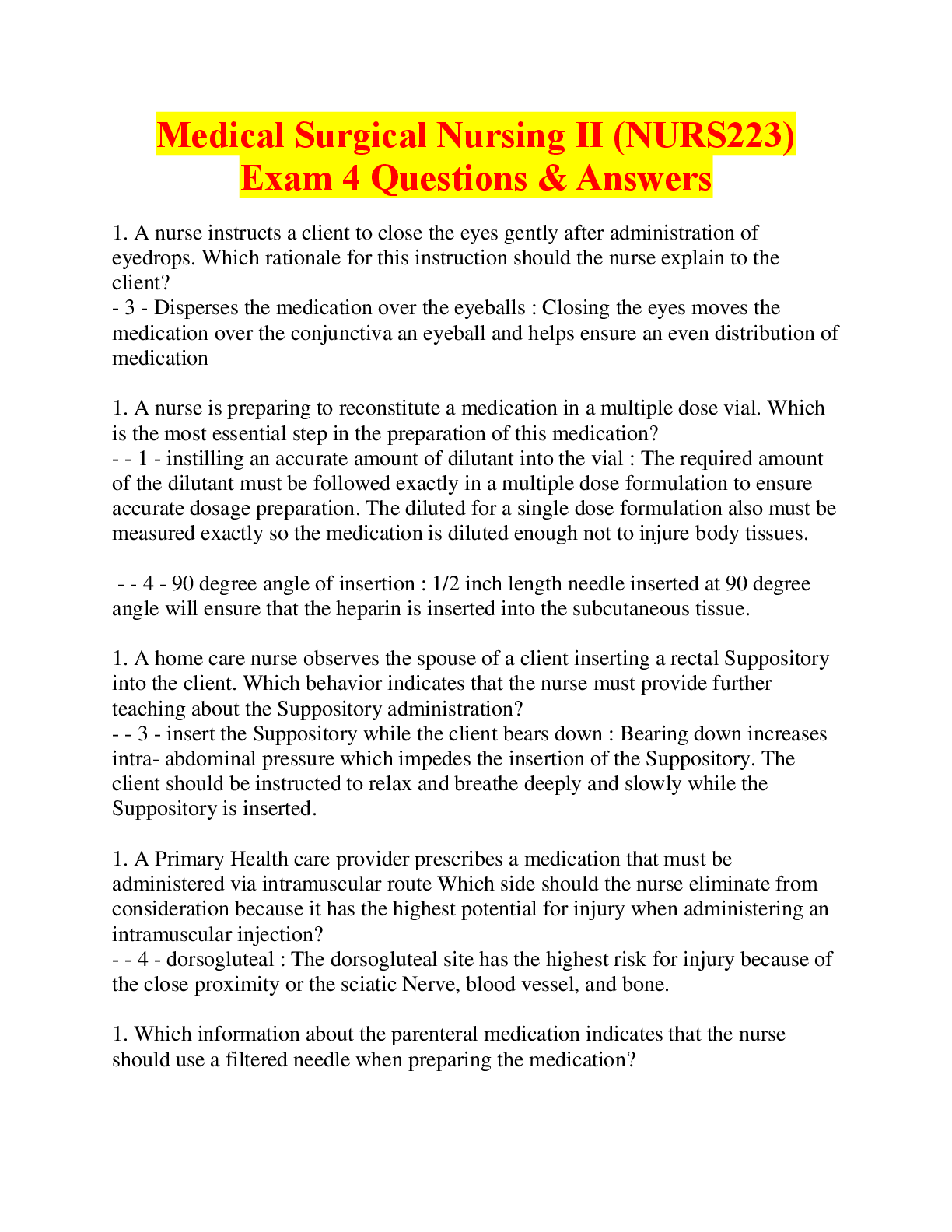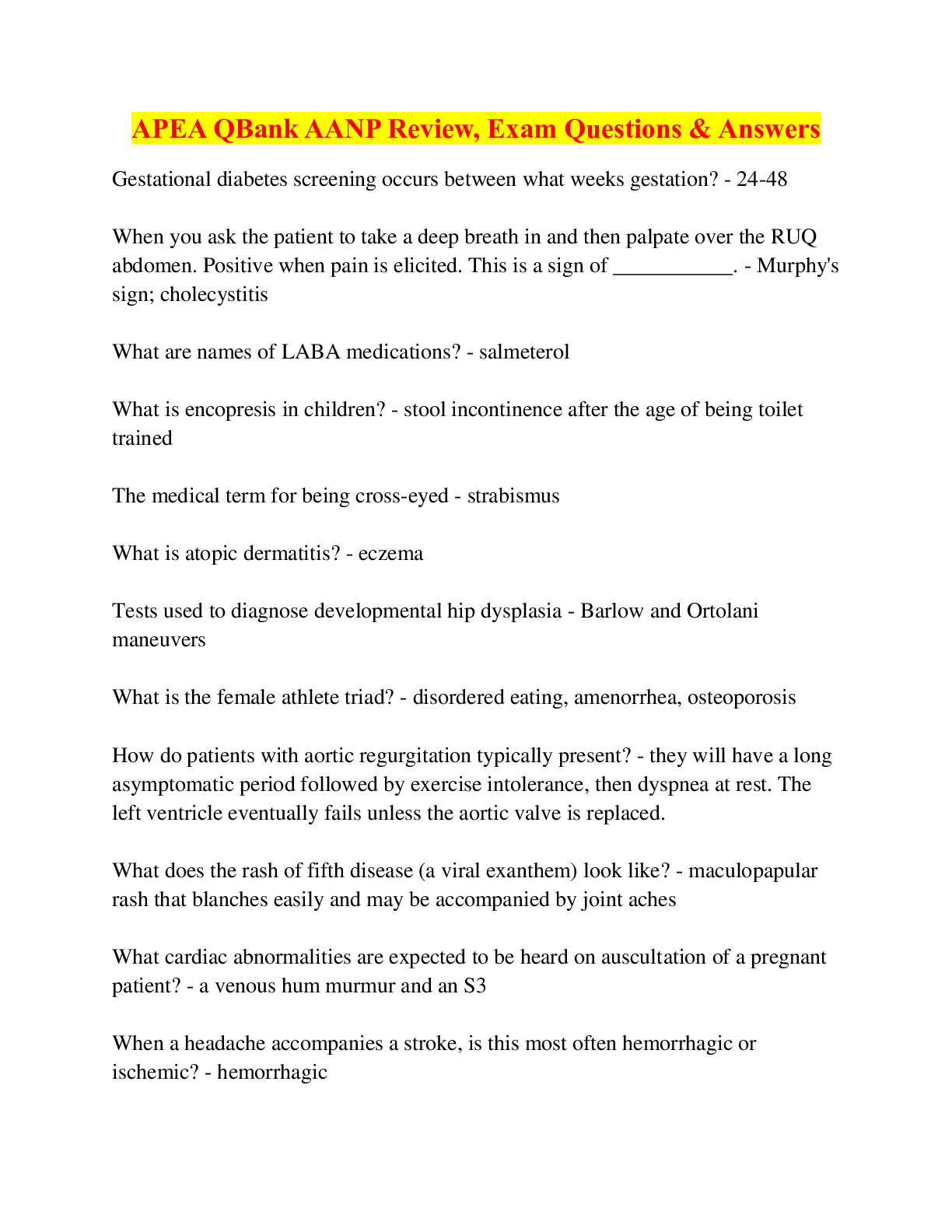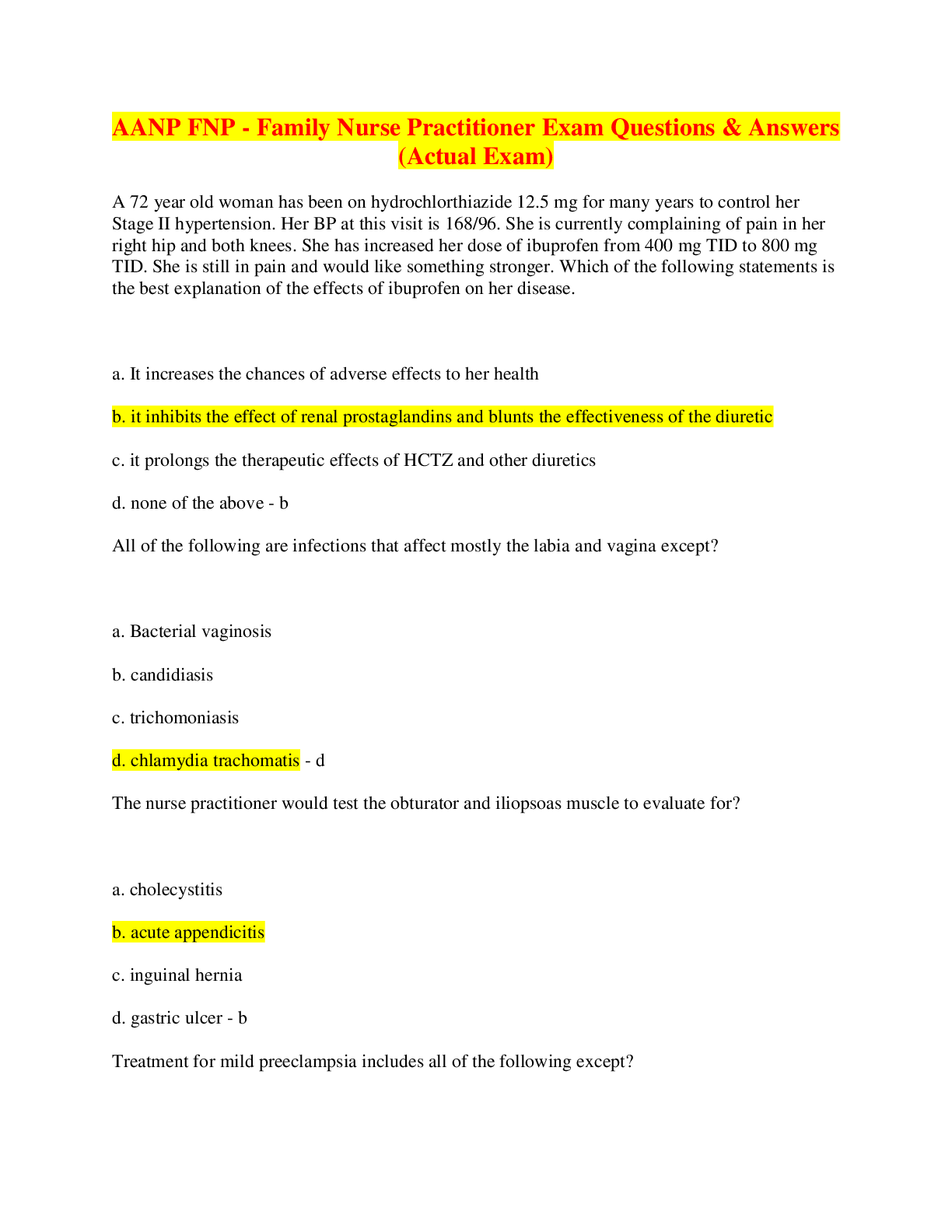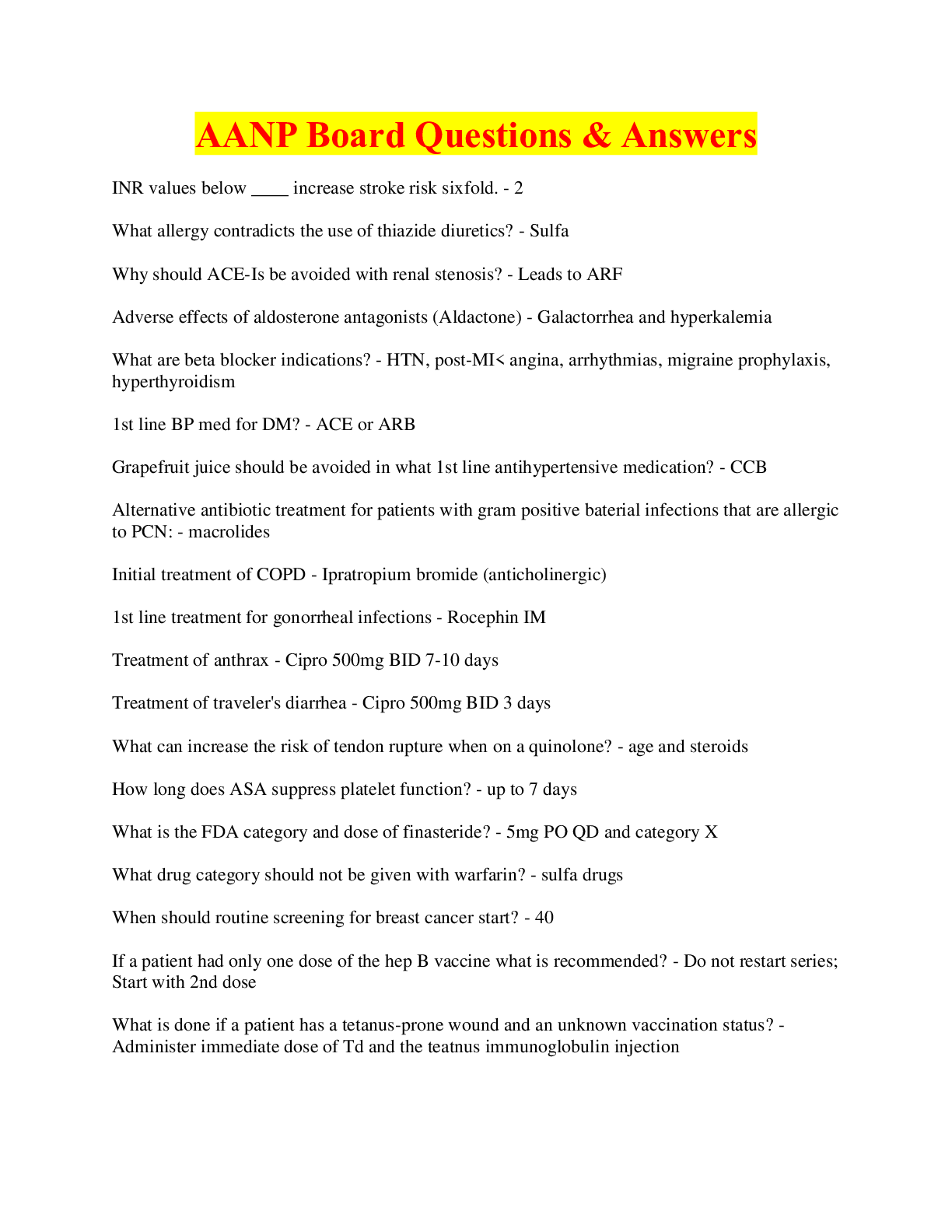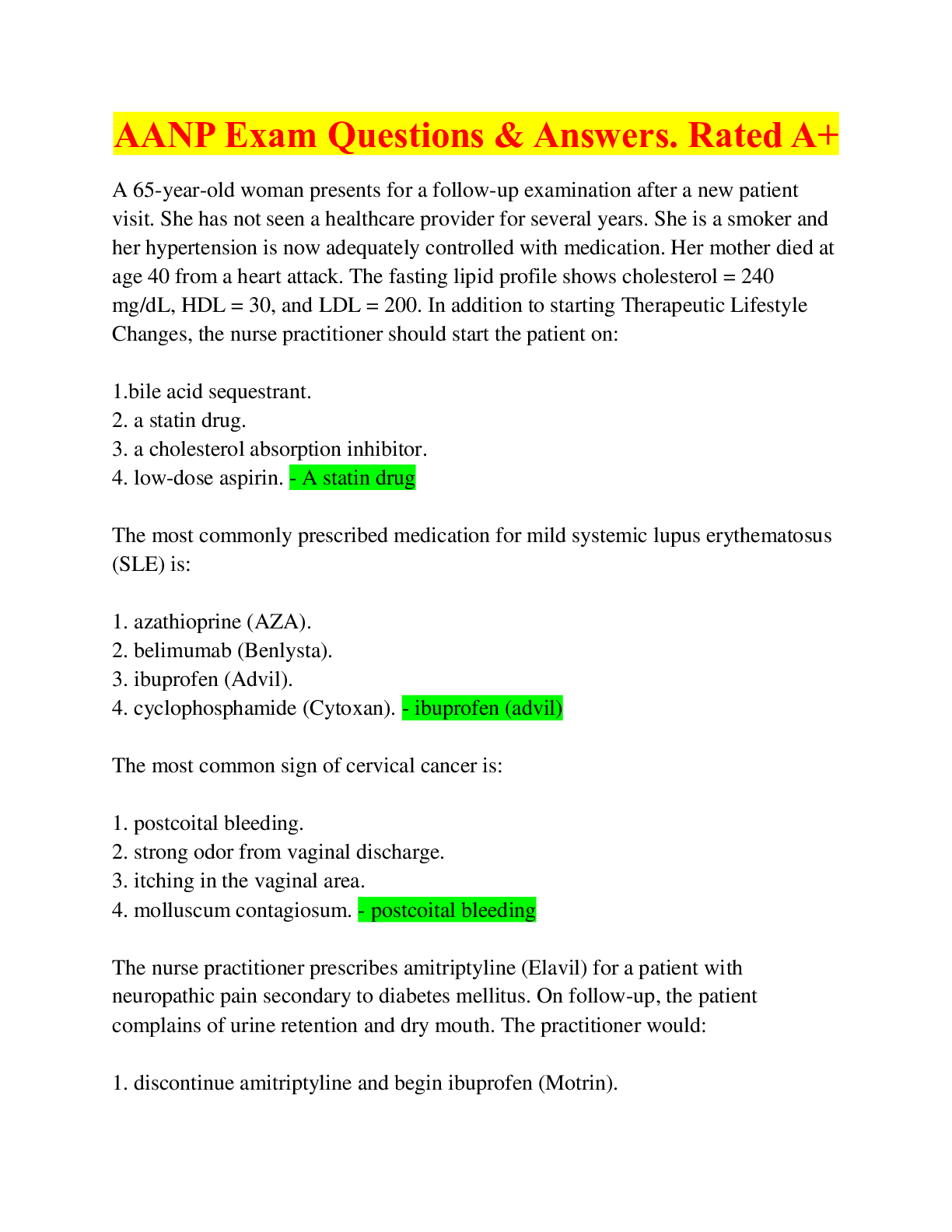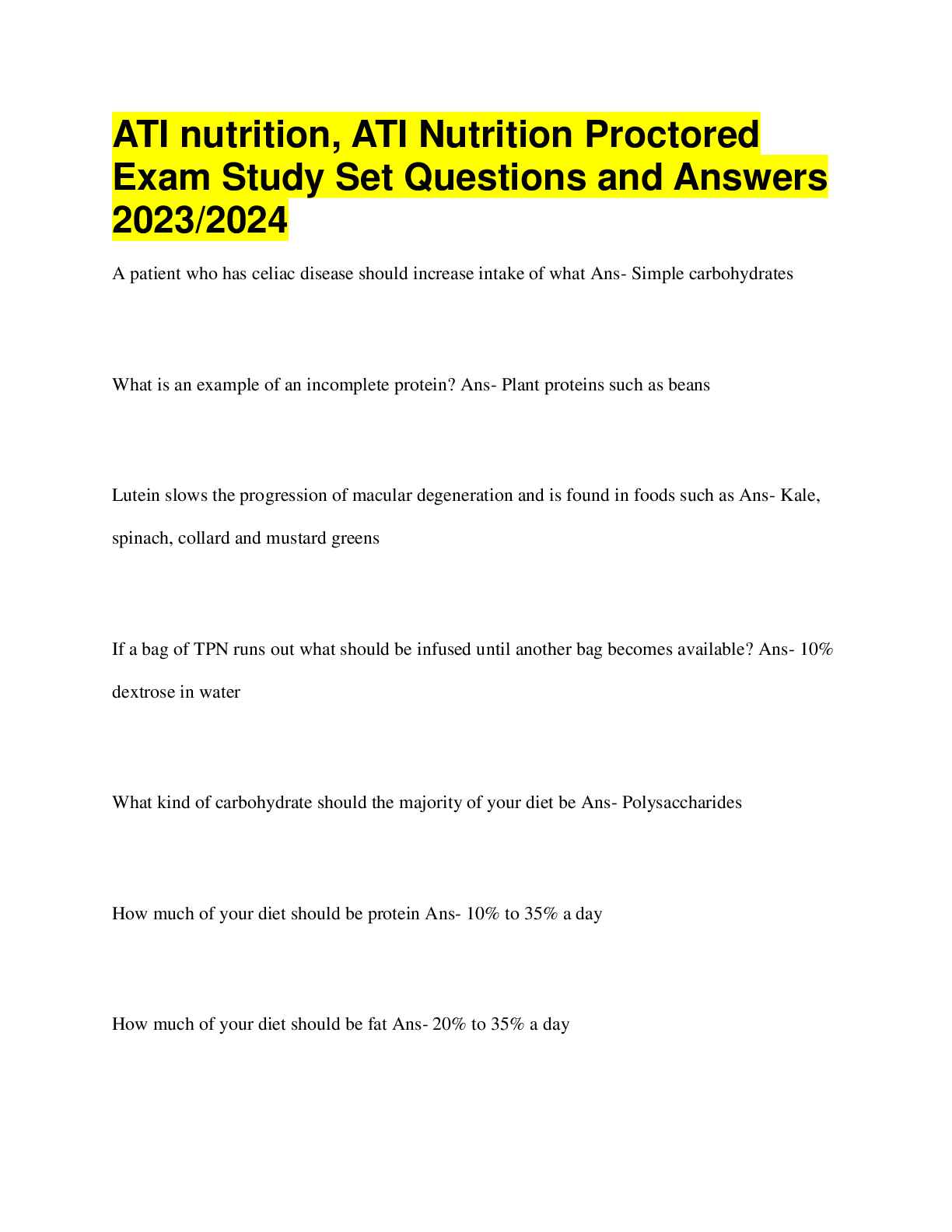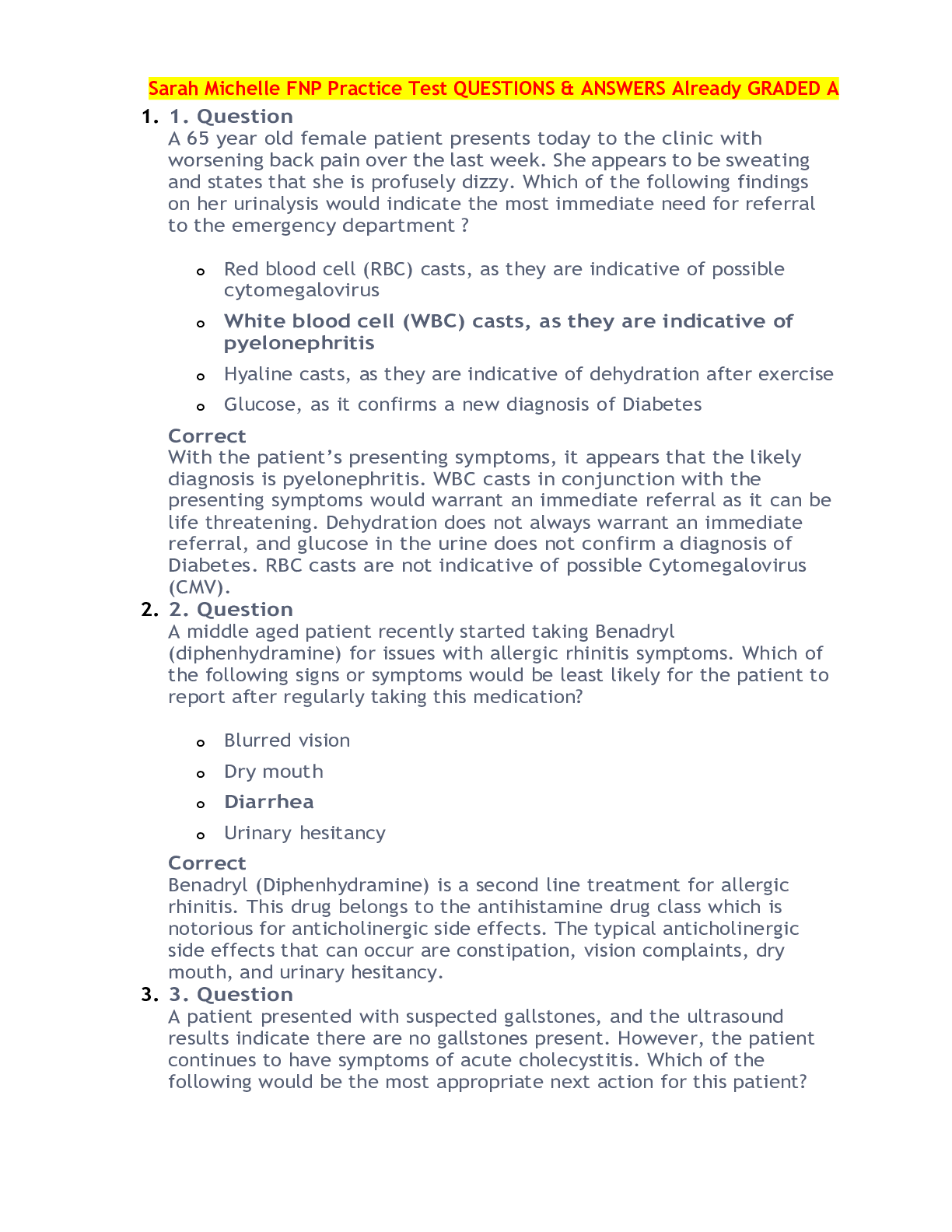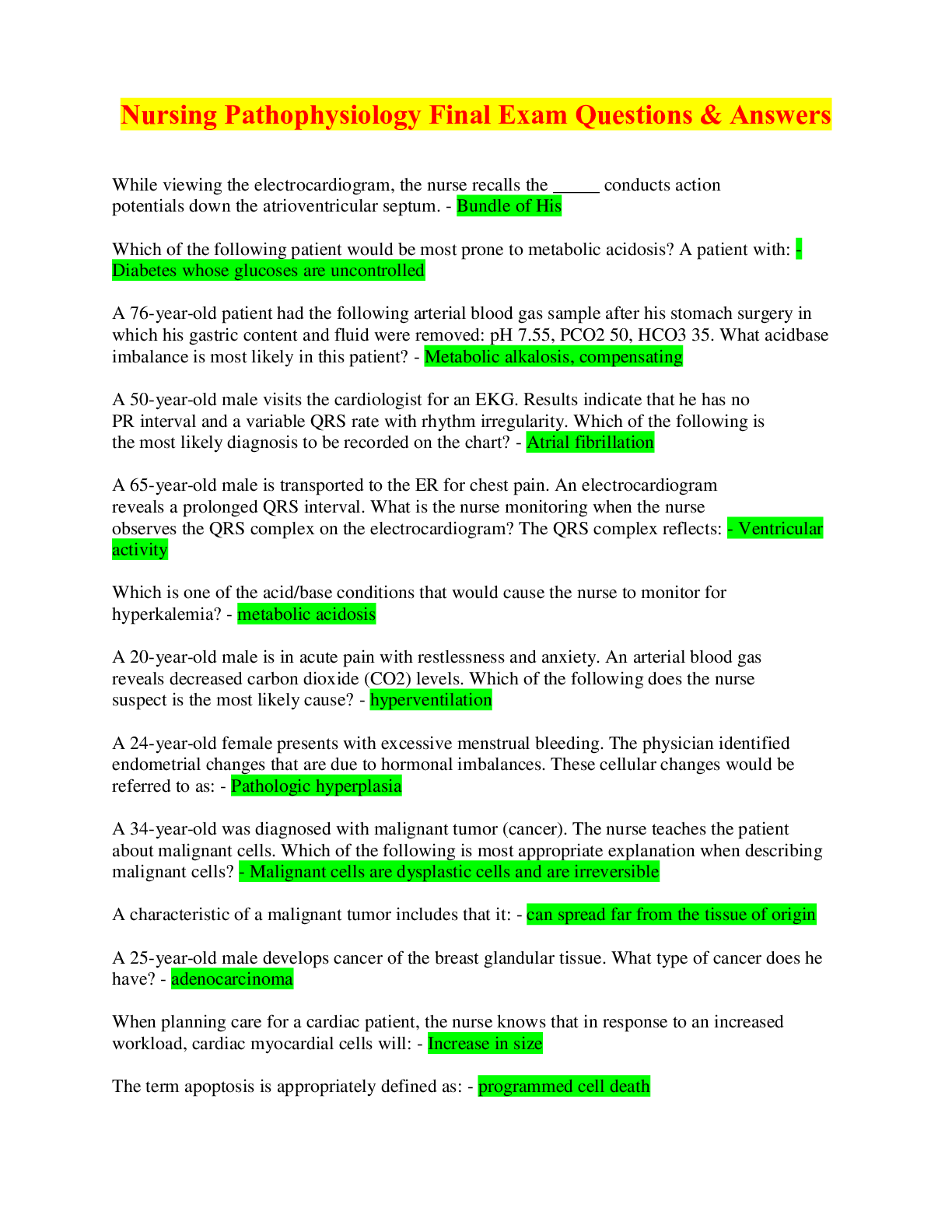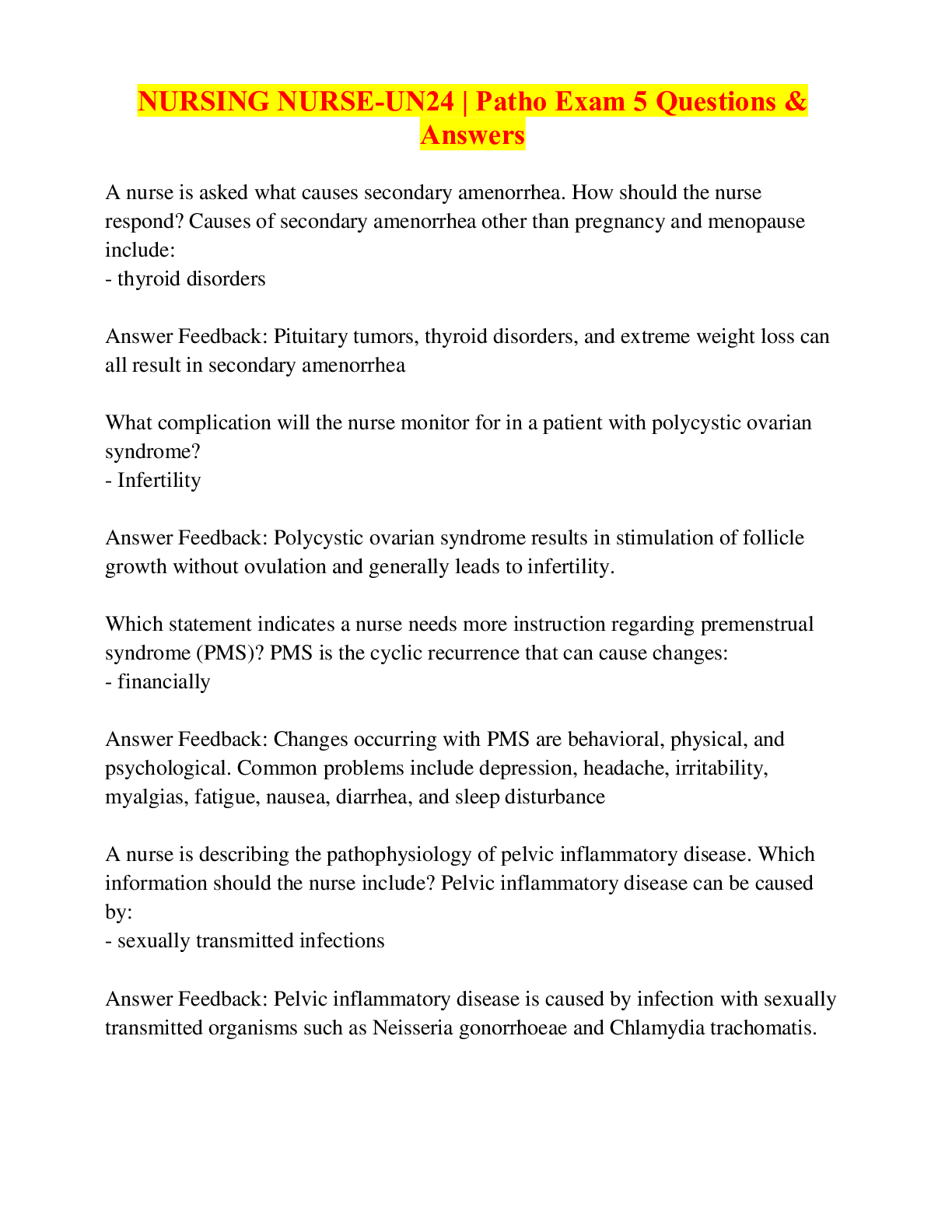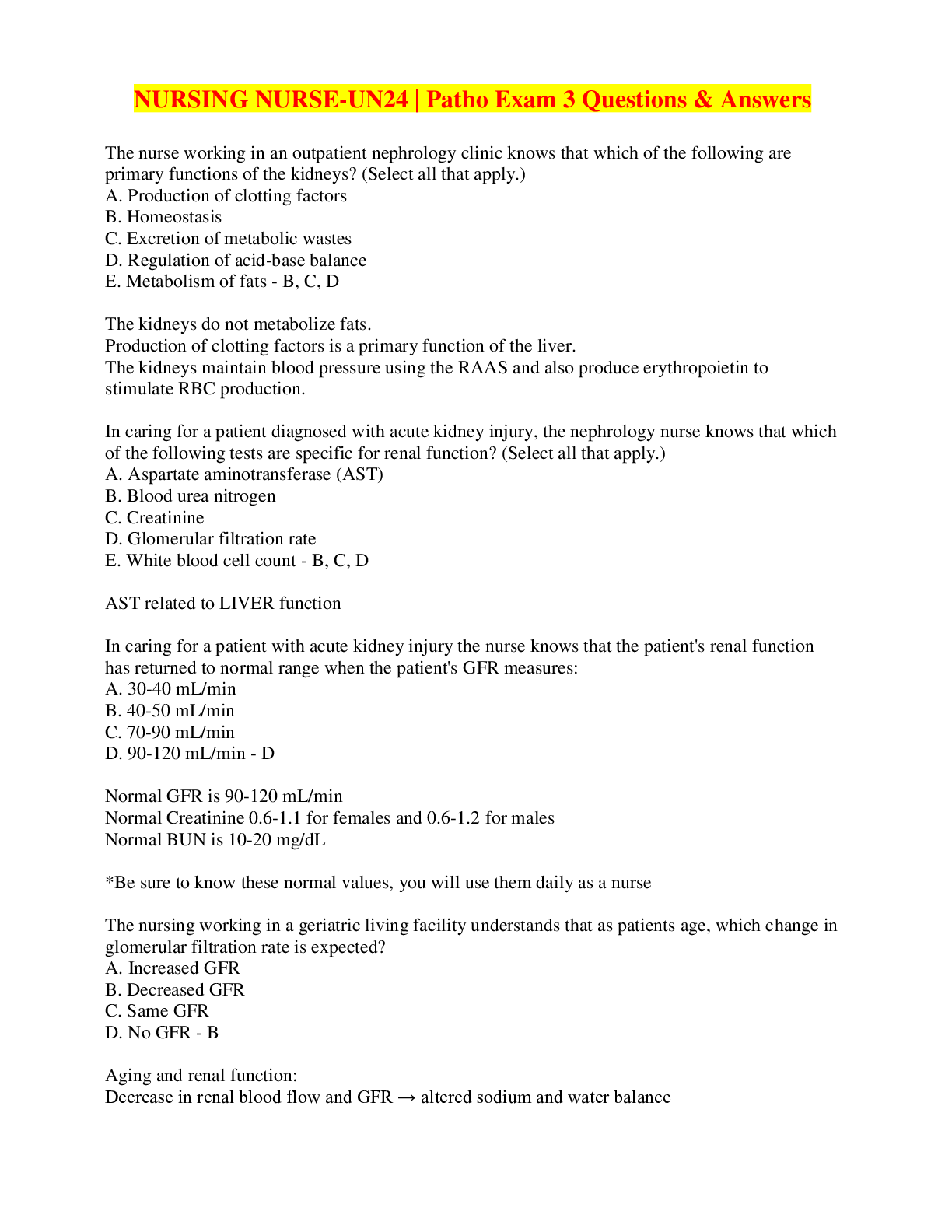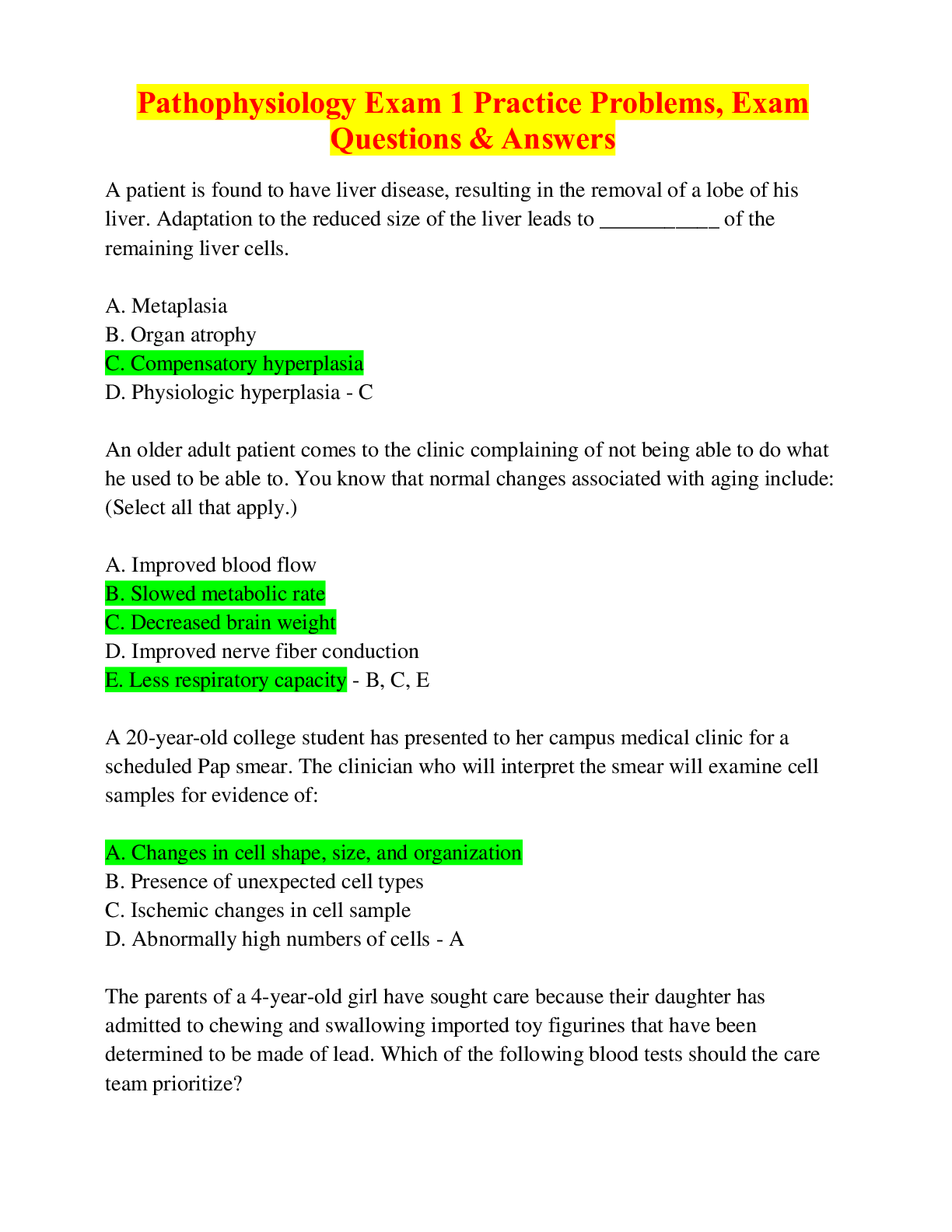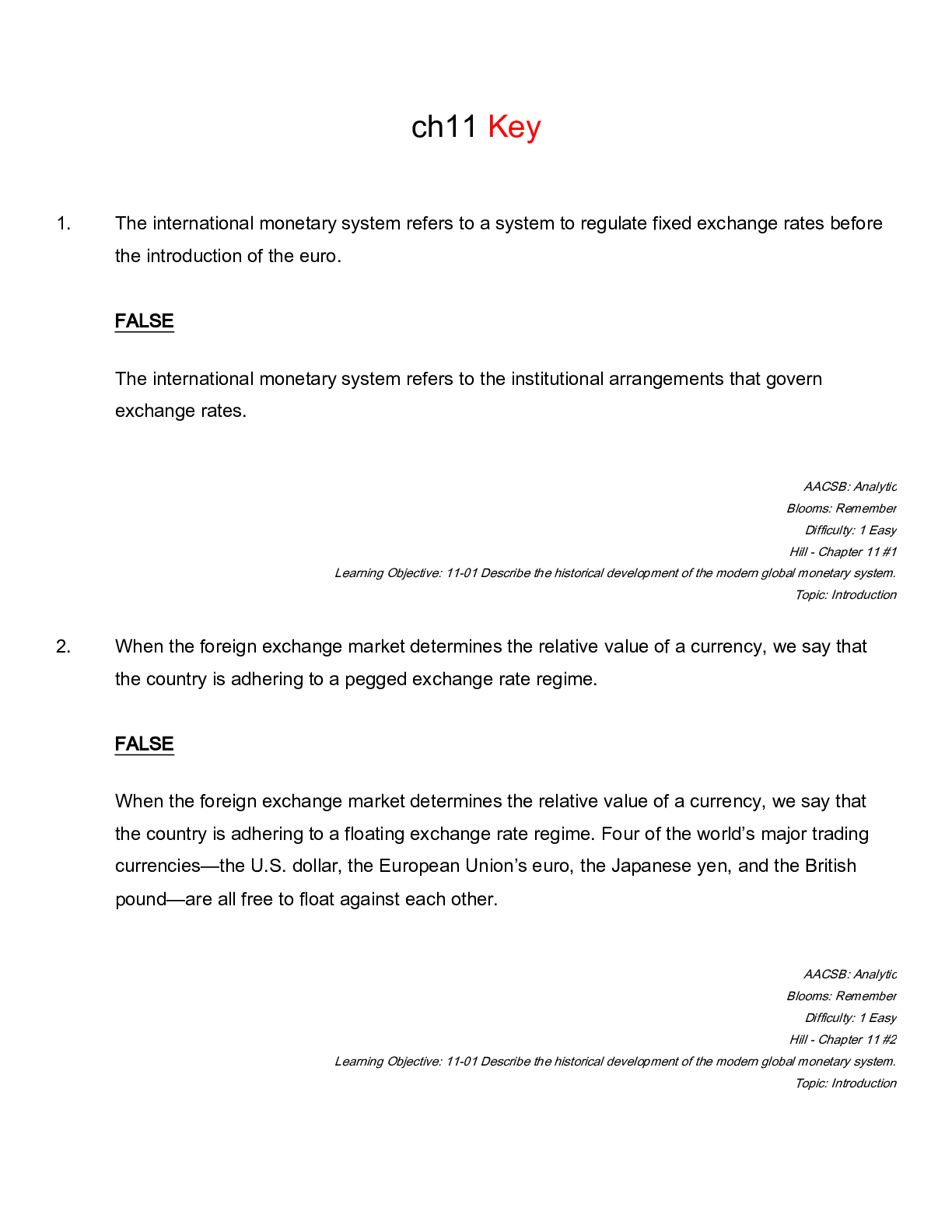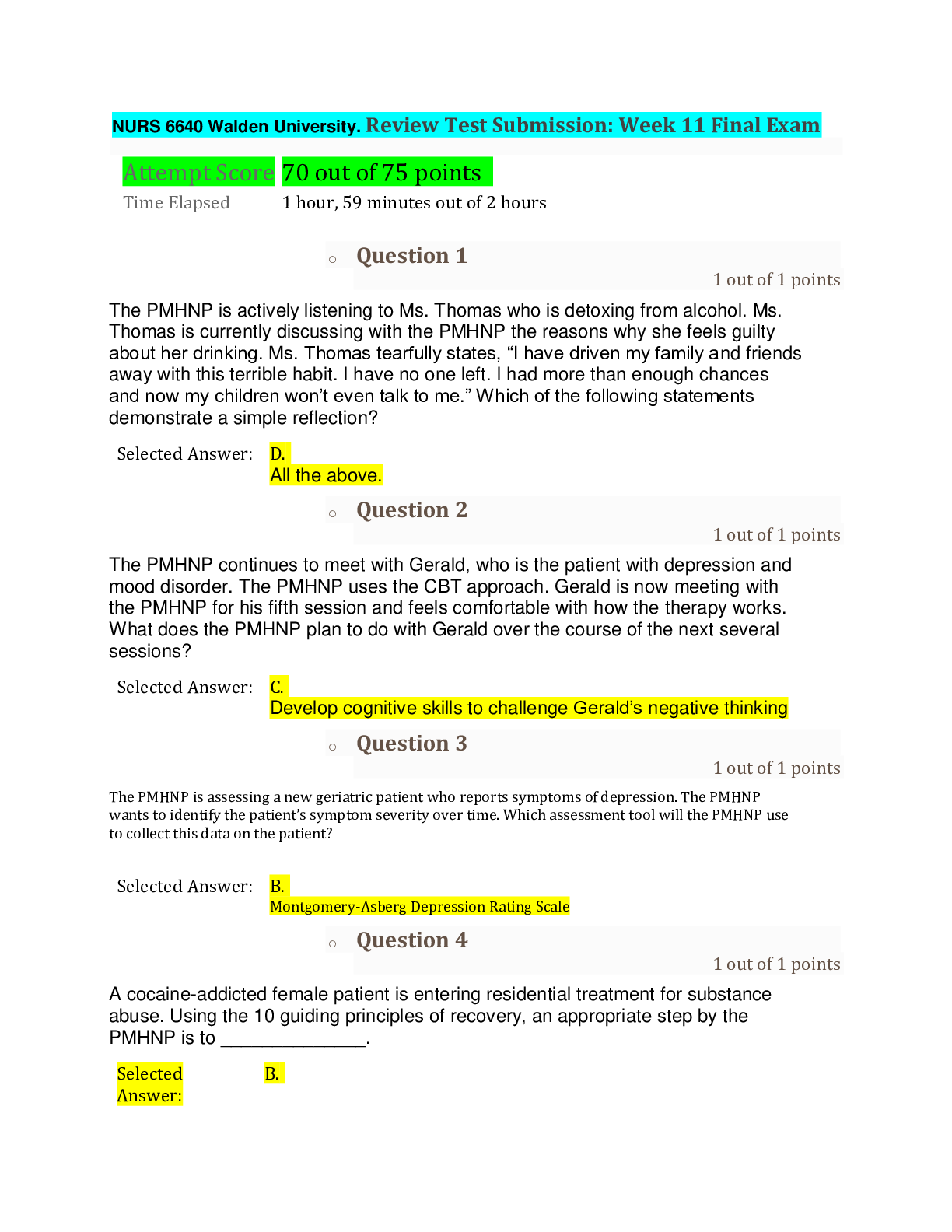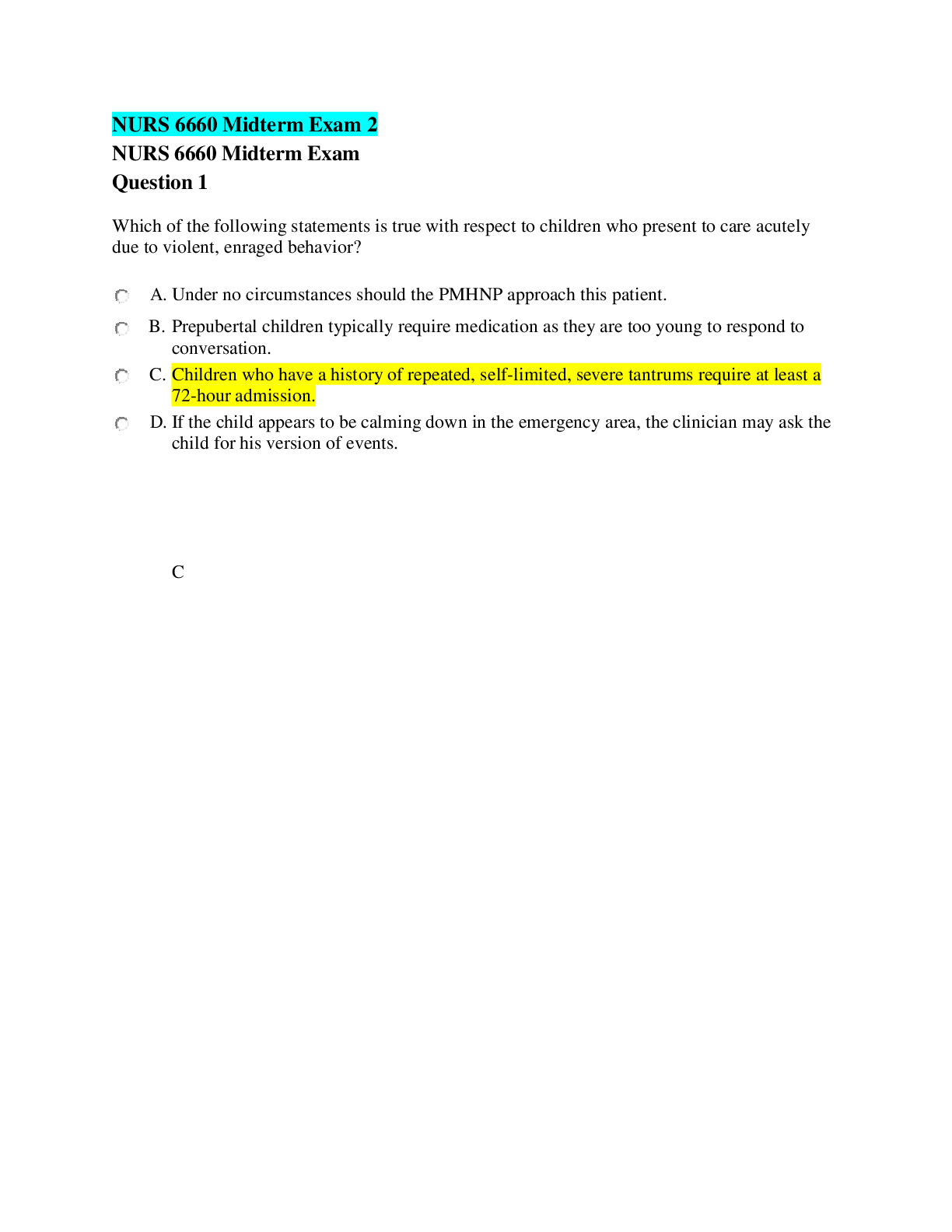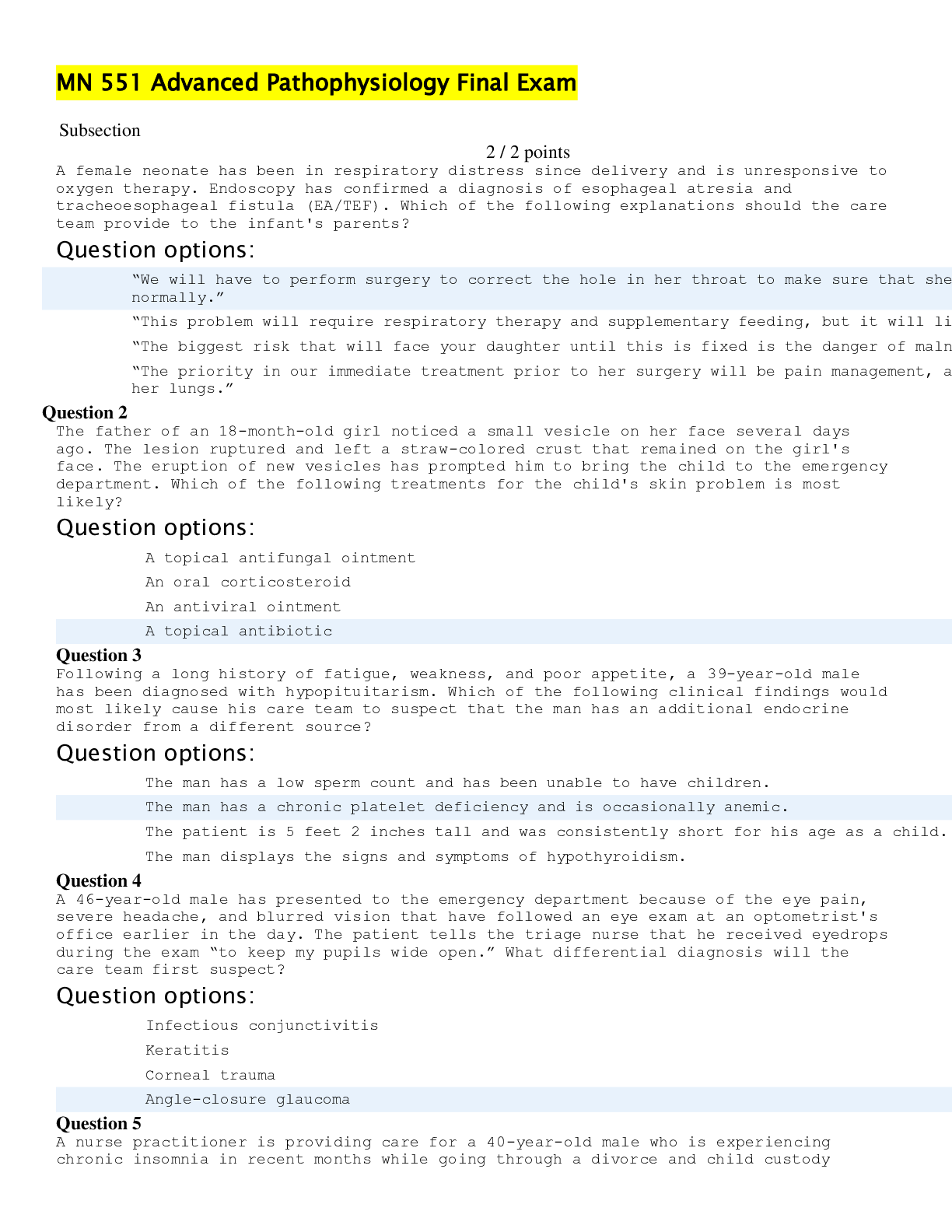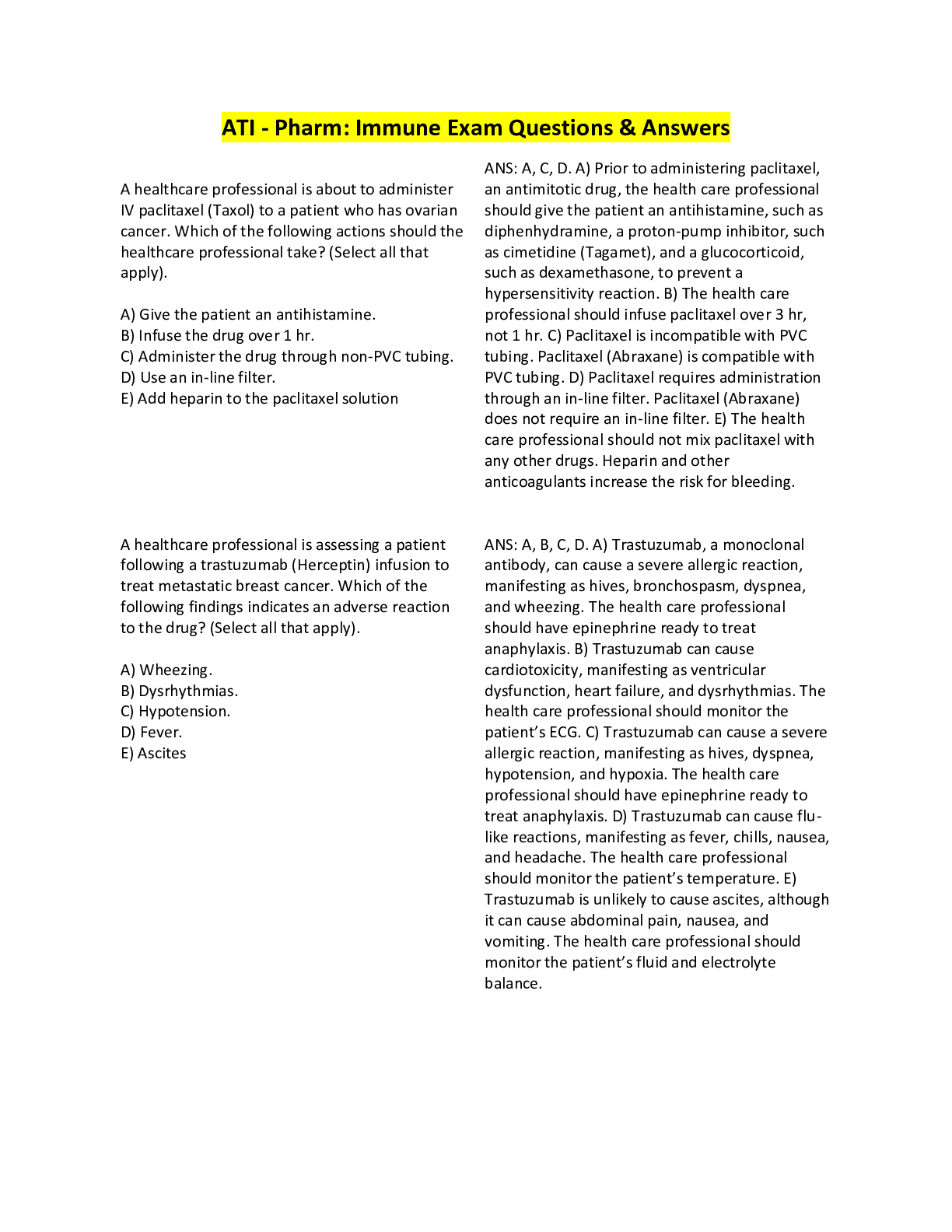PCCN Actual Final Exam Review Questions & Answers, Rated 100%
Document Content and Description Below
PCCN Actual Final Exam Review Questions & Answers, Rated 100%-A nurse is caring for a 71-year-old female patient with end-stage chronic obstructive pulmonary disease (COPD) who is experiencing cardiac... ischemia with increased shortness of breath. The MOST appropriate goal of oxygen therapy for this patient would be to: A. Limit supplemental oxygen to lower the risk of reducing respiratory drive B. Maintain oxygen saturations between 86% and 89% C. Administer oxygen until oxygen saturations are greater than 95% in order to relieve ischemia D. Maintain oxygen saturations between 90% and 92% - D. Maintain oxygen saturations between 90% and 92% Feedback Maintaining oxygen saturations between 90% and 92% will serve the purpose of providing enough oxygen to relieve cardiac ischemia while reducing the risk of respiratory depression in a patient with COPD. Laboratory studies from a 22-year-old male client with Type I diabetes mellitus are evaluated during an admission for severe pneumonia. Which of the following laboratory results should the nurse report to the physician? A. Glycosylated hemoglobin (HbA1c), 9.8% B. Low-density lipoprotein (LDL), C. 94 mg/dLHematocrit (Hct), 53% D. Urine specific gravity, 1.250 - A. Glycosylated hemoglobin (HbA1c), 9.8% Feedback Glycosylated hemoglobin measures the average blood sugar levels over a 2 to 3 month time period. Clients with previously diagnosed diabetes mellitus should aim to keep their HbA1c levels below 7%.CONTENT AREA: Clinical Judgement: Endocrine/Hematology/Neurology/GI/Renal The nurse is assessing a 68 year old female patient with a history of chronic obstructive pulmonary disease (COPD). The patient presents with complaints of recent confusion, increased fatigue, and syncopal episodes when walking. The nurse assesses S3 and S4 sounds on auscultation, jugular vein distention, and +3 pitting edema of the ankles and feet. Which of the following complications of COPD does the nurse suspect the patient is most likely experiencing? A. Acute respiratory distress syndrome (ARDS) B. Bronchiectasis C. Heart failure D. Cor pulmonale - D. Cor pulmonale Feedback The nurse should recognize that a history of COPD together with the signs and symptoms listed here are suggestive of cor pulmonale. The patient requires further workup to confirm this diagnosis. A 42-year-old male with Marfan syndrome and complaint of dizziness is admitted to the telemetry unit for monitoring. Which of the following accompanying symptoms may indicate the need for immediate surgical attention? A. Cough with vocal hoarseness B. Limited rotation of the left shoulder C.Headache that resolved after breakfast, but has returned D. Sudden stabbing pain in the right elbow - A. Cough with vocal hoarseness Feedback Patients diagnosed with Marfan syndrome are at higher risk for aortic aneurysms. Changes in vocal quality accompanied by a cough or dysphagia (difficulty swallowing) may indicate that a thoracic aortic aneurysm is becoming more enlarged. The nurse is assessing a 74 year old female patient who has presented with the following symptoms: cool, clammy skin; faint, irregular peripheral pulses, and +3 pitting edema in her bilateral lower extremities. Her partner tells the nurse the patient has a history of heart failure with a recent LVEF of 20%, as well as type 2 diabetes. The patient's HR is 132, BP is 79/48, and blood glucose is 349. Which of the following conditions does the nurse suspect? A. Cardiogenic shock B. Diabetic ketoacidosis C. Fluid overload D. Obstructive shock - A. Cardiogenic shock Feedback The nurse should identify that cardiogenic shock is an emergency that has extremely high mortality rates without timely intervention. The patient's history of heart failure together with her acute symptoms of weak pulses, edema, and hypotension all point to cardiogenic shock. The nurse is caring for a patient with stage 5 chronic kidney disease who normally receives hemodialysis three times a week on Monday, Wednesday, and Friday. It is now Sunday and the patient states they have missed their last two dialysis sessions. The patient is complaining of shortness of breath and fatigue, and their labs show a creatinine of 3.9 and potassium of 6.8. What is the BEST treatment for this patient ? A. 80 mg IV push furosemide followed by rechecking the potassium level, with more IV furosemide as needed B. 15 g kayexalate PO twice daily C. Intravenous calcium infusion D. Urgent hemodialysis - D. Urgent hemodialysis Feedback The nurse should recognize that dialysis is the best option for this patient since they are already a regular dialysis patient and are a likely candidate to receive urgent dialysis due to their missed dialysis sessions, shortness of breath, and critical potassium level. A 17-year-old male client is recovering from idiopathic infective endocarditis. The nurse should include which of the following teaching points in the discharge care plan for this client? A. Taking prophylactic antibiotics before dental procedures B. Drinking no more than 1 liter of fluid per day C. Strictly avoiding caffeine or other stimulants D. Encouraging a healthy low-fat diet that includes at least 2 grams of sodium intake per day - A. Taking prophylactic antibiotics before dental procedures Feedback Client with a history of infective endocarditis should take prophylactic antibiotics before dental procedures and some surgical procedures. The nurse is caring for a 21 year old female who is being treated with IV magnesium for pre-eclampsia. Upon assessment, the nurse notes that the patient's skin is flushed, her blood pressure is 88/56, and her respiratory rate is 12. The nurse checks the patient's magnesium level and finds that it is 7.2 mg/dL. Which of the following actions does the nurse anticipate taking next? A. Administering intravenous calcium gluconate B. Increasing the rate of the magnesium infusion C. Placing the patient in Trendelenburg and administering a bolus of IV fluid D.Preparing the patient for a bedside cardioversion. - A. Administering intravenous calcium gluconate Feedback The nurse should identify that the signs and symptoms here are reflective of a critically high magnesium level, reflected by the lab level of 7.2 mg/dL, and that the correct treatment is an infusion of calcium gluconate. [Show More]
Last updated: 6 months ago
Preview 1 out of 40 pages

Loading document previews ...
Buy this document to get the full access instantly
Instant Download Access after purchase
Buy NowInstant download
We Accept:

Reviews( 0 )
$15.50
Can't find what you want? Try our AI powered Search
Document information
Connected school, study & course
About the document
Uploaded On
Jan 02, 2025
Number of pages
40
Written in
Additional information
This document has been written for:
Uploaded
Jan 02, 2025
Downloads
0
Views
27
